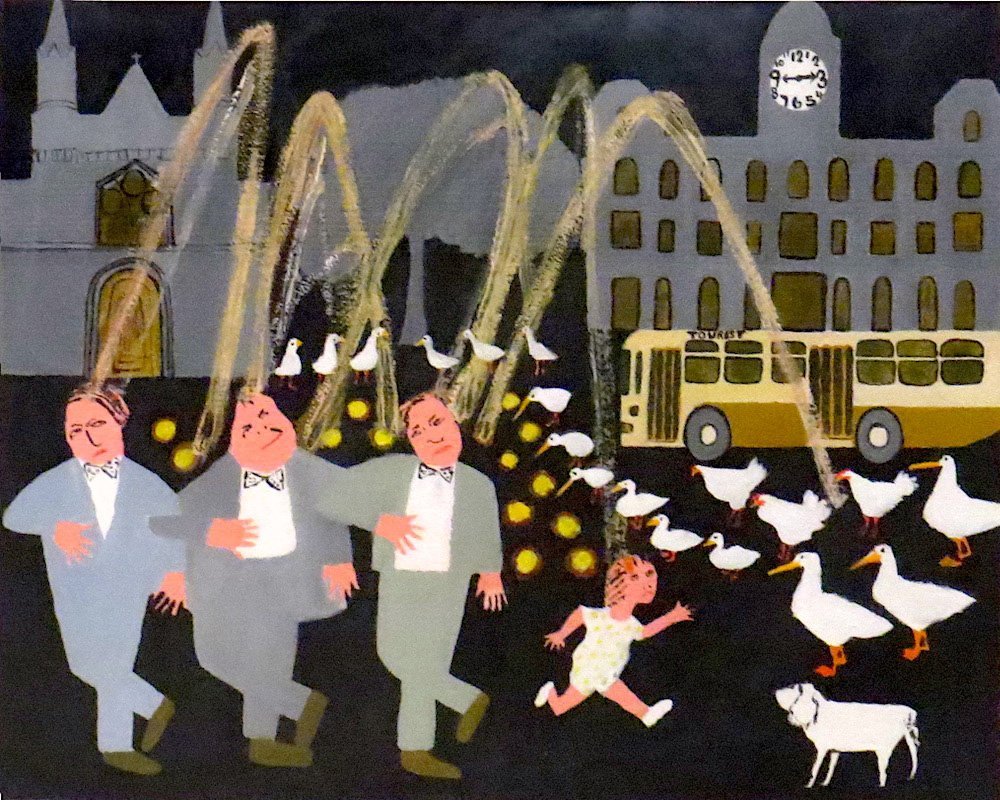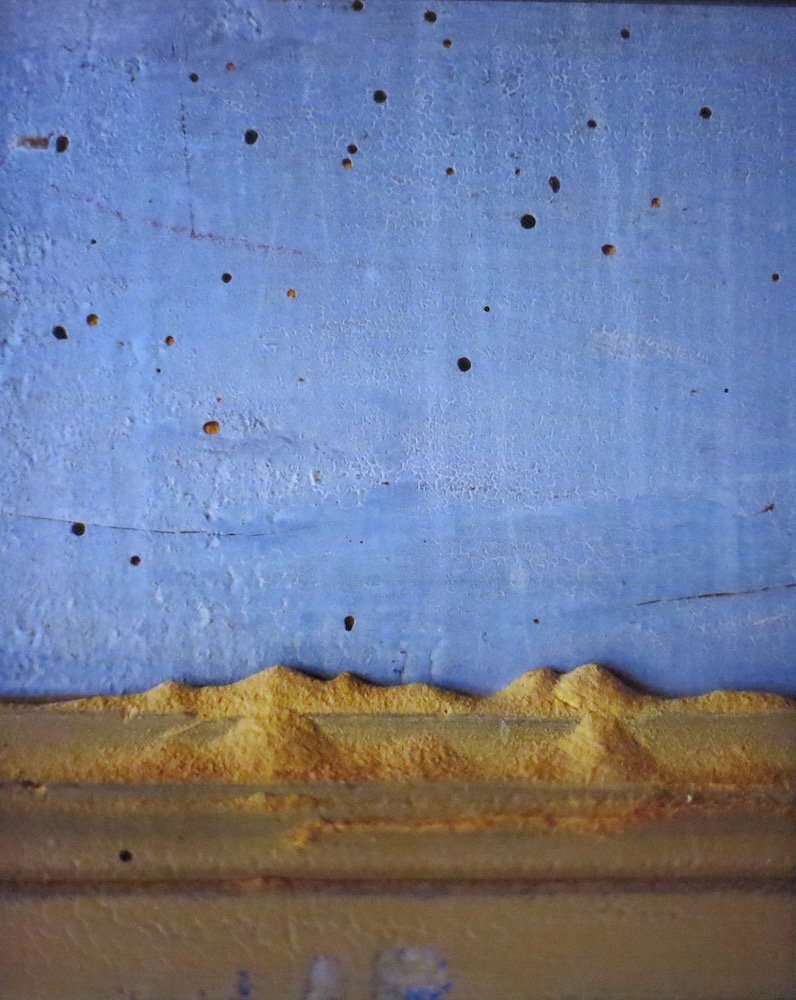
(Dunedin Public Art Gallery)
Few dealer galleries are open in Dunedin over the Christmas/New Year period, so this is a good time to investigate some of the exhibitions which Dunedin Public Art Gallery has on show. At present there are a range of displays aimed at all ages, with school holiday children particularly catered for with "You Spy, I Spy".
The art on display is a charming series of paintings by late Dunedin artist Annie Baird, originally painted as illustrations for a Dunedin-centric ABC book written by journalist and historian George Griffiths in 1981. A wry sense of humour fills many of the works, as exemplified by the bored expression on the Queen Victoria statue to the worried look on a dog about to be kicked by an infant. Even then-Prime Minister Robert Muldoon makes an appearance in one work, dancing with dignitaries in a night-time Octagon. There is a light friendliness to the art, with the colourful local scenes painted in a deliberately child-like naive style.
The gallery is one of several sites which have combined for the hunt that the exhibition is part of. Literally an "I spy" game, participants are asked to find things around the city and the exhibition beginning with each letter of the alphabet.

(DPAG)
There is also an interactive element aimed at younger gallery visitors in Emily Floyd’s "Keeping it Complex, Keeping it Connected", although the exhibition’s primary intention is to explore the educational process.
The artist, the gallery’s 2022 Creative New Zealand Toi Aotearoa international visiting artist, has been inspired by education through art and play to create a thought-provoking exhibition in which the gallery space becomes both installation and workshop. The works range from humorous sculptural "umlauts", vowels with double-dotted accents which become cartoon eyes, through to a massive wall relief featuring quotations from text books on education. These are presented as a series of leaning panels reminiscent of book spines along a major wall.
Watching over the exhibition sits a cute, dumpy aluminium owl, its slick, black body representing the symbol of Minerva, goddess of wisdom. Beyond the owl, Floyd has built two long tables, upon which sit printing blocks, the tools of one of her artistic disciplines, which young visitors to the gallery may experiment with and explore. A group of the artist’s screenprints sit on a wall next to these tables, a series of simple yet dynamic graphic designs which also reflect both the activity and importance of interactive education.

(DPAG)
The works of several photographic and video artists are presented in the DPAG’s "Vital Machinery".
The exhibition’s video works are by Louise Menzies, Selina Ershadi and Azita Chegini. Menzies presents a study of artist Joanna Margaret Paul, focusing on her work through poetry, against an eerie soundtrack of free-form jazz. The line blurs between Paul’s practice and Menzies’, so we become uncertain which artist is depicting which. Ershadi and Chegini’s narrated video of a return to the pair’s native Iran weaves in and out of history and mythology, and leaving with the sad conclusion that "these mountains are not the mountains of my youth". Even when you go home, you can never go home.
Conor Clarke’s photographs also present unremembered mountains. His images explore the relationship between tangata and whenua, history and physical landscape. The separation between human and nature is emphasised in the impressive Tele Photo, with its screen-grabbed mountain scene separated from the viewer by frosted glass. Meg Porteous’ images examine our obsession with self-image, from the medical to the candid, often to disturbing effect.
Janet Lilo’s massive photomontage Stolen/Time completes the display. Snatched moments build to create a structured mind-map of mahi, whanau, and the emotional and physical pull and push which are created when trying to allow time for both.
By James Dignan












